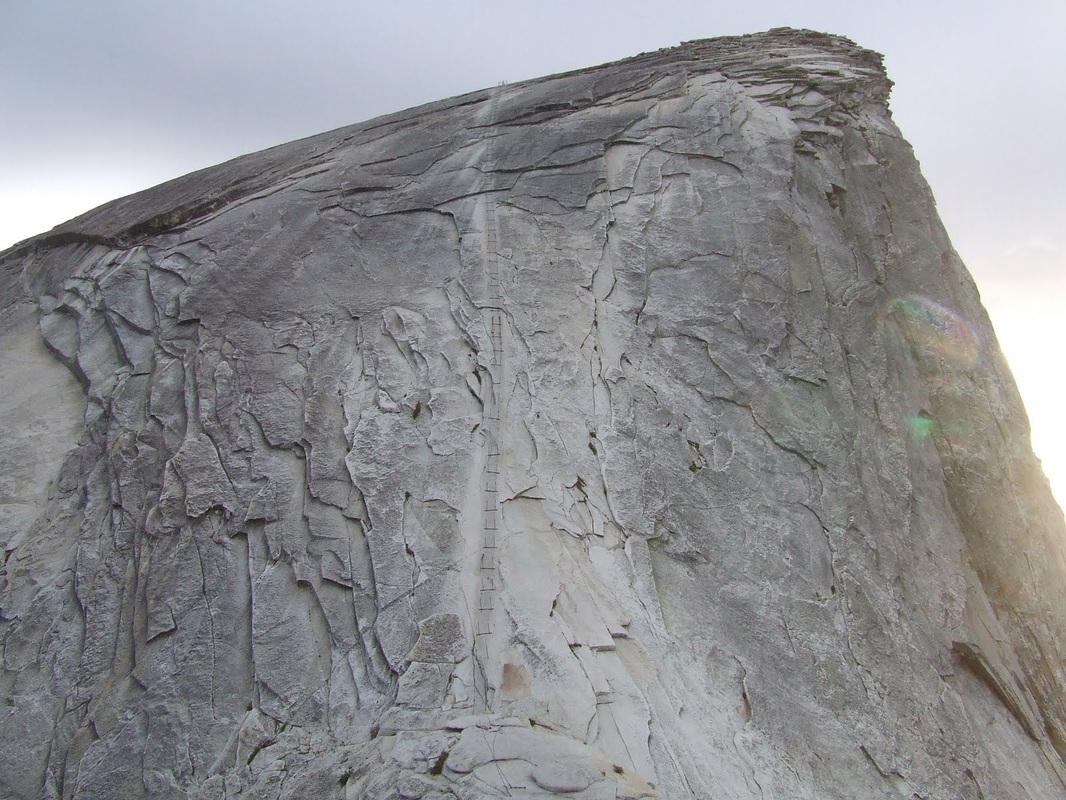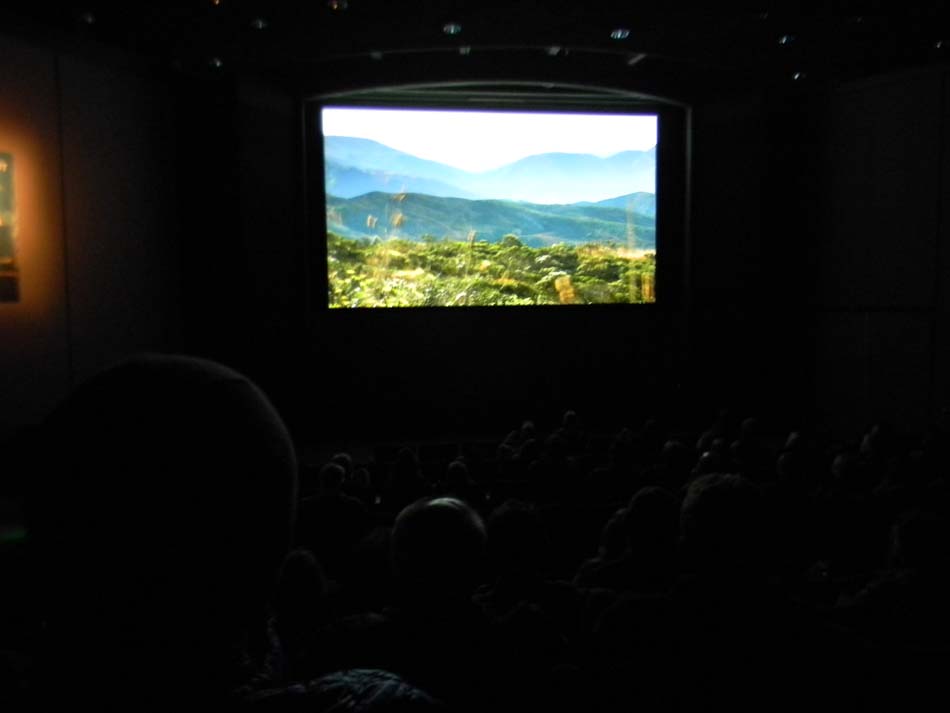WawonaNews.com - March 2014
Stunning time-lapse videos of Yosemite
by By Mark Berman - The Washington Post
This gorgeous new video comes from Colin Delehanty and Sheldon Neill, who wrote on their Web site that they filmed it by visiting the park repeatedly over a 10-month span. They hiked more than 200 miles and filmed for about 45 days to produce the footage you see above. (Here’s a list of the locations they visited and the equipment they used.)
It’s a sequel to a similarly stunning time-lapse video they released in 2012. That video was a big hit online, getting played more than 4 million times and racking up more than 31,000 likes on Vimeo. You can watch the original here:
This gorgeous new video comes from Colin Delehanty and Sheldon Neill, who wrote on their Web site that they filmed it by visiting the park repeatedly over a 10-month span. They hiked more than 200 miles and filmed for about 45 days to produce the footage you see above. (Here’s a list of the locations they visited and the equipment they used.)
It’s a sequel to a similarly stunning time-lapse video they released in 2012. That video was a big hit online, getting played more than 4 million times and racking up more than 31,000 likes on Vimeo. You can watch the original here:
Half Dome Cables Day Use Permits Available Through March 31
Permits Required Seven Days Per Week to Hike Half Dome Cables
Half Dome cables day use permits for the 2014 hiking season will be available for reservation starting tomorrow, Saturday, March 1, through Monday, March 31, 2014. Permits to hike to the top of Half Dome are required seven days per week and reservations will be distributed via a lottery system. Successful parties will be notified in mid-April. A maximum of 300 hikers will be allowed on the Half Dome cables per day.
Reservations for the permits can be made online at www.recreation.gov or by calling 1-877-444-6777.
Approximately 50 subsequent daily permits will be available each day by lottery during the hiking season. These permits are made available based on the number of no-shows and cancellations from the pre-season lottery. The permits must be applied for two days in advance of the desired hiking date. Reservations for the two-day in advance permits can also be made through www.recreation.gov.
Hiking to the top of Half Dome is one of the most popular hikes in Yosemite National Park. The iconic granite monolith, at 8,842 feet above sea level, attracts people from all over the world who attempt to climb to the summit. Most visitors ascend Half Dome via the cables, which are typically in place from mid-May through mid-October. Most visitors begin and end their hike at Happy Isles in Yosemite Valley. This is an approximately 17 mile round-trip journey.
To learn more about the Half Dome hike please visit www.nps.gov/yose/planyourvisit/halfdome.htm.
Half Dome cables day use permits for the 2014 hiking season will be available for reservation starting tomorrow, Saturday, March 1, through Monday, March 31, 2014. Permits to hike to the top of Half Dome are required seven days per week and reservations will be distributed via a lottery system. Successful parties will be notified in mid-April. A maximum of 300 hikers will be allowed on the Half Dome cables per day.
Reservations for the permits can be made online at www.recreation.gov or by calling 1-877-444-6777.
Approximately 50 subsequent daily permits will be available each day by lottery during the hiking season. These permits are made available based on the number of no-shows and cancellations from the pre-season lottery. The permits must be applied for two days in advance of the desired hiking date. Reservations for the two-day in advance permits can also be made through www.recreation.gov.
Hiking to the top of Half Dome is one of the most popular hikes in Yosemite National Park. The iconic granite monolith, at 8,842 feet above sea level, attracts people from all over the world who attempt to climb to the summit. Most visitors ascend Half Dome via the cables, which are typically in place from mid-May through mid-October. Most visitors begin and end their hike at Happy Isles in Yosemite Valley. This is an approximately 17 mile round-trip journey.
To learn more about the Half Dome hike please visit www.nps.gov/yose/planyourvisit/halfdome.htm.
Tourism to Yosemite Creates over $378 Million in Economic Benefit
Report shows visitor spending supports 5,162 jobs in local economy
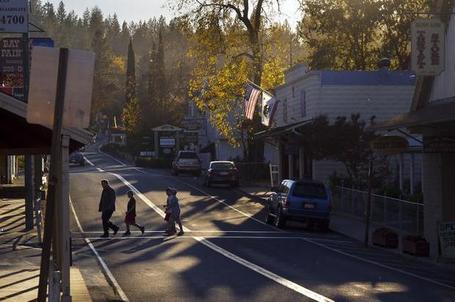
A new National Park Service (NPS) report shows that 3,853,404 visitors to Yosemite National Park in 2012 spent $378,757.7 million in communities near the park. That spending supported 5,162 jobs in the local area.
“Yosemite National Park is proud to welcome visitors from across the country and around the world,” said Don Neubacher, Yosemite Superintendent. “We are delighted to share the story of this place and the experiences it provides and to use the park as a way to introduce our visitors to this part of the country and all that it offers. National park tourism is a significant driver in the national economy – returning $10 for every $1 invested in the National Park Service - and it’s a big factor in our local economy as well. We appreciate the partnership and support of our neighbors and are glad to be able to give back by helping to sustain local communities.”
The peer-reviewed visitor spending analysis was conducted by U.S. Geological Survey economists Catherine Cullinane Thomas and Christopher Huber and Lynne Koontz for the National Park Service. The report shows $14.7 billion of direct spending by 283 million park visitors in communities within 60 miles of a national park. This spending supported 243,000 jobs nationally, with 201,000 jobs found in these gateway communities, and had a cumulative benefit to the U.S. economy of $26.75 billion.
According to the report most visitor spending supports jobs in restaurants, grocery and convenience stores (39 percent), hotels, motels and B&Bs (27 percent), and other amusement and recreation (20 percent).
To download the report visit http://www.nature.nps.gov/socialscience/economics.cfm.
The report includes information for visitor spending at individual parks and by state.
To learn more about national parks in California and how the National Park Service works with California communities to help preserve local history, conserve the environment, and provide outdoor recreation, go to www.nps.gov/california.
“Yosemite National Park is proud to welcome visitors from across the country and around the world,” said Don Neubacher, Yosemite Superintendent. “We are delighted to share the story of this place and the experiences it provides and to use the park as a way to introduce our visitors to this part of the country and all that it offers. National park tourism is a significant driver in the national economy – returning $10 for every $1 invested in the National Park Service - and it’s a big factor in our local economy as well. We appreciate the partnership and support of our neighbors and are glad to be able to give back by helping to sustain local communities.”
The peer-reviewed visitor spending analysis was conducted by U.S. Geological Survey economists Catherine Cullinane Thomas and Christopher Huber and Lynne Koontz for the National Park Service. The report shows $14.7 billion of direct spending by 283 million park visitors in communities within 60 miles of a national park. This spending supported 243,000 jobs nationally, with 201,000 jobs found in these gateway communities, and had a cumulative benefit to the U.S. economy of $26.75 billion.
According to the report most visitor spending supports jobs in restaurants, grocery and convenience stores (39 percent), hotels, motels and B&Bs (27 percent), and other amusement and recreation (20 percent).
To download the report visit http://www.nature.nps.gov/socialscience/economics.cfm.
The report includes information for visitor spending at individual parks and by state.
To learn more about national parks in California and how the National Park Service works with California communities to help preserve local history, conserve the environment, and provide outdoor recreation, go to www.nps.gov/california.
Chukchansi: who is and who isn't (and is it all about $$$?)
Yosemite outsmarts its food-stealing bears
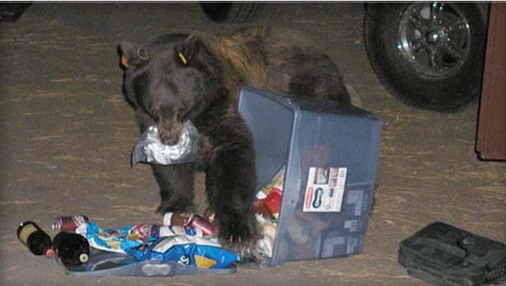 This Yosemite bear is in a campsite eating food from an open locker. NPS
This Yosemite bear is in a campsite eating food from an open locker. NPS
Livescience.comMarch 4, 2014, 2:02 PM
Remembering to lock up everything from baby wipes to bratwurst may be irksome for Yosemite National Park visitors, but a new study finds the park's stringent food storage rules slashed the amount of human food eaten by black bears by 63 percent.
Yosemite National Park is home to hundreds of black bears -- no one keeps an accurate count -- only some of which seek out human food and garbage. After a record 1,584 bear incidents in 1998, park officials enacted new food storage requirements to stop bears from stealing food and garbage. These measures help prevent bear deaths and human-bear interactions, because a food-reliant bear often becomes an aggressive bear, according to the park. With more than 4 million visitors yearly, Yosemite now spends about $500,000 annually on supplies, outreach and activities meant to prevent bears from getting into human food.
According to the new study, which tracked the diets of nearly 200 bears by analyzing hair samples, the massive effort is working. Chemical signatures in the hair differentiate between human and wild food sources. The findings were published in the March issue of the journal Frontiers in Ecology and the Environment.
"What we found was that the diets of bears changed dramatically after 1999, when the park got funding to implement a proactive management strategy to keep human food off the landscape," Jack Hopkins, lead study author and a wildlife ecologist at the University of California, Santa Cruz. "This suggests that the bear's diets are likely going back to their natural diet."
Among bears that eat human food, only 13 percent of their diet came from anthropogenic, or human sources, between 2001 and 2007, Hopkins found. That's the same as in the park's early years, between 1915 and 1919, when only a few thousand visitors made the long journey into Yosemite Valley. Hopkins examined the early diet of Yosemite's black bears by snipping hair from museum specimens.
Established in 1890, Yosemite National Park hasn't always had a hands-off approach to feeding its bears. Between 1923 and 1971, the park operated artificial feeding areas, to attract bears for visitors who wanted to view the local wildlife. A trout hatchery in the park, open between 1927 and 1956, also offered bears a spot for easy gorging.
The bear's diet reflects these changing food sources, the study shows. The proportion of human food was 27 percent between 1928 to 1939, and 35 percent between 1975 to 1985, among bears who ate a non-natural diet. Throughout the study, Hopkins also found bears in the park who subsist only on their natural diet of berries, nuts, insects and meat.
Prevention is best
The findings support the management approach of preventing bear access to food. Brown metal food storage lockers for campers, cylindrical plastic storage containers for backcountry hikers and funding for inspections by rangers were added in 1999 in Yosemite. Everything must go into storage, even toothpaste. Nothing should remain in sight in cars, where the sight of a cooler or storage bin might tempt a hungry bear to bust open a window.
"Reducing the amount of food on the ground and making sure visitors are compliant with food storage has led to this management success," Hopkins told Live Science. "It appears that management that is related to preventing bears from becoming too conditioned to food in the first place is one of the best things to put money into."
Previous research by Hopkins and his colleagues also found that stopping bears from getting that first taste of human food can break the chain of picnic-basket stealers. For example, bears that are raised by moms who snack on human food also strike out in search of campgrounds and other human sources once they're on their own. "They carry that information with them throughout their lives," Hopkins said. And problem bears that are moved away from people eventually make their way back to their favorite food sites, another study found. The reward? Bears that eat human food are bigger and bear more cubs than those who subsist solely on their traditional diets, though they have a shorter life span. That's because they're eventually killed as a nuisance or by hunters, because the bears are near developed areas.
Email Becky Oskin or follow her @beckyoskin. Follow us @livescience,Facebook & Google+. Original article on Live Science.
Remembering to lock up everything from baby wipes to bratwurst may be irksome for Yosemite National Park visitors, but a new study finds the park's stringent food storage rules slashed the amount of human food eaten by black bears by 63 percent.
Yosemite National Park is home to hundreds of black bears -- no one keeps an accurate count -- only some of which seek out human food and garbage. After a record 1,584 bear incidents in 1998, park officials enacted new food storage requirements to stop bears from stealing food and garbage. These measures help prevent bear deaths and human-bear interactions, because a food-reliant bear often becomes an aggressive bear, according to the park. With more than 4 million visitors yearly, Yosemite now spends about $500,000 annually on supplies, outreach and activities meant to prevent bears from getting into human food.
According to the new study, which tracked the diets of nearly 200 bears by analyzing hair samples, the massive effort is working. Chemical signatures in the hair differentiate between human and wild food sources. The findings were published in the March issue of the journal Frontiers in Ecology and the Environment.
"What we found was that the diets of bears changed dramatically after 1999, when the park got funding to implement a proactive management strategy to keep human food off the landscape," Jack Hopkins, lead study author and a wildlife ecologist at the University of California, Santa Cruz. "This suggests that the bear's diets are likely going back to their natural diet."
Among bears that eat human food, only 13 percent of their diet came from anthropogenic, or human sources, between 2001 and 2007, Hopkins found. That's the same as in the park's early years, between 1915 and 1919, when only a few thousand visitors made the long journey into Yosemite Valley. Hopkins examined the early diet of Yosemite's black bears by snipping hair from museum specimens.
Established in 1890, Yosemite National Park hasn't always had a hands-off approach to feeding its bears. Between 1923 and 1971, the park operated artificial feeding areas, to attract bears for visitors who wanted to view the local wildlife. A trout hatchery in the park, open between 1927 and 1956, also offered bears a spot for easy gorging.
The bear's diet reflects these changing food sources, the study shows. The proportion of human food was 27 percent between 1928 to 1939, and 35 percent between 1975 to 1985, among bears who ate a non-natural diet. Throughout the study, Hopkins also found bears in the park who subsist only on their natural diet of berries, nuts, insects and meat.
Prevention is best
The findings support the management approach of preventing bear access to food. Brown metal food storage lockers for campers, cylindrical plastic storage containers for backcountry hikers and funding for inspections by rangers were added in 1999 in Yosemite. Everything must go into storage, even toothpaste. Nothing should remain in sight in cars, where the sight of a cooler or storage bin might tempt a hungry bear to bust open a window.
"Reducing the amount of food on the ground and making sure visitors are compliant with food storage has led to this management success," Hopkins told Live Science. "It appears that management that is related to preventing bears from becoming too conditioned to food in the first place is one of the best things to put money into."
Previous research by Hopkins and his colleagues also found that stopping bears from getting that first taste of human food can break the chain of picnic-basket stealers. For example, bears that are raised by moms who snack on human food also strike out in search of campgrounds and other human sources once they're on their own. "They carry that information with them throughout their lives," Hopkins said. And problem bears that are moved away from people eventually make their way back to their favorite food sites, another study found. The reward? Bears that eat human food are bigger and bear more cubs than those who subsist solely on their traditional diets, though they have a shorter life span. That's because they're eventually killed as a nuisance or by hunters, because the bears are near developed areas.
Email Becky Oskin or follow her @beckyoskin. Follow us @livescience,Facebook & Google+. Original article on Live Science.
Rim Fire Sparks Debate Over Dead Trees
CBS News -March 1, 2014, 7:30 AM|
It’s been six months since the third largest wildfire in California’s history burned more than 400 square miles of forest near Yosemite National Park. Brandon Scott reports on the growing debate about what to do with the seemingly endless forest of trees killed by the fire.
It’s been six months since the third largest wildfire in California’s history burned more than 400 square miles of forest near Yosemite National Park. Brandon Scott reports on the growing debate about what to do with the seemingly endless forest of trees killed by the fire.
Range of Light Film Festival a Success
The Range of Light Film Festival opened Thursday, Feb. 28 and ends on Sunday,March 2nd. The selection of films for the first two days has been exceptional and all of them rewarded with great attendance from the public. Many of the showings also provided the public with a chance to meet their filmmakers and ask questions. For a complete list of movies and times, please refer to the Range of Light Film Festival Program.
Tom Bopp's Performances Discontinued at the Ahwahnee Hotel
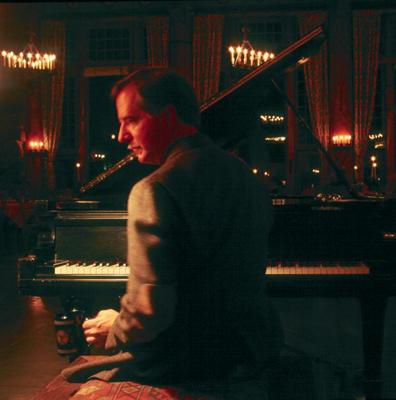
For the first time since 1985, Tom has not been engaged to perform during the winter at The Ahwahnee Hotel; live entertainment in The Ahwahnee Bar has been discontinued. Please let them know your thoughts by writing an email to Brett Archer, manager of the Ahwahnee Hotel at:
[email protected]
Visit Tom on the web at www.yosemitemusic.com
[email protected]
Visit Tom on the web at www.yosemitemusic.com
Crafts Seeking Re-election
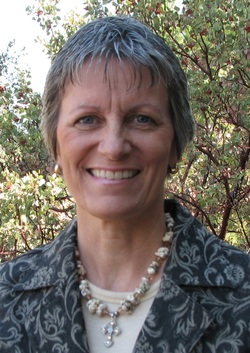
Crafts
has been a Mariposa County Resident since 1978, graduating from Mariposa County
High School and Merced College. She started her career in the
Assessor-Recorder’s Office in October of 1983, and quickly promoted to
increasingly responsible positions. She served in a supervisory/management
position for 14 years and as for the past 8 years has served as your elected
Assessor-Recorder.
The Assessor-Recorder’s Office also functions as the official Registrar of Birth, Death & Marriage certificates; she is certified by the State of California to perform this function.
Crafts holds an Advanced Appraiser Certification by the State Board of Equalization. She is certified by the State Board in the Income Approach to Value, Appraisal of Agricultural Property, Valuation of orchards and vineyards, Valuation of Open Space Land (Williamson Act).
A few of Crafts accomplishments that she has maintained is a high level of public service throughout the lean budget years and plans to continue the outstanding service. “I applaud my staff for their outstanding efforts and sincere commitment to the taxpayers of Mariposa County”. She has implemented the EDRS system which allows death certificates to be registered electronically. “This enables a faster process time, which allows families to take care of their loved ones”.
As Assessor-Recorder, she feels her responsibility is to treat the public with fairness and integrity. To perform accurate, fair and uniform assessments of all county property; identify and assess all taxable property; implement property tax laws and protect the personal property rights of the public. To ensure the public that all documents meet recording criteria.
Crafts is very active is supporting community activities and the youth of Mariposa. She is a member of Mariposa Junior Livestock Auction Committee, Past Community Club Leader and Project Leader for Evergreen 4-H Club, Mariposa Fair Horseshow Committee member, Treasurer Mariposa Pioneer Wagon Train, Past Region 4 Chair TRAP program for the California State Horsemen’s Association, Mariposa Friends of the Fair and Grace Church.
Becky and her husband Tim have been married for 28 years and have two daughters Tawni Prien and Lindsey Crafts.
"I take my morals and family values very seriously, that is why I want to continue to give the taxpayers of Mariposa County their money’s worth and the benefit of my 30 years of experience”.
I would appreciate your continued support and your vote in June 2014.
The Assessor-Recorder’s Office also functions as the official Registrar of Birth, Death & Marriage certificates; she is certified by the State of California to perform this function.
Crafts holds an Advanced Appraiser Certification by the State Board of Equalization. She is certified by the State Board in the Income Approach to Value, Appraisal of Agricultural Property, Valuation of orchards and vineyards, Valuation of Open Space Land (Williamson Act).
A few of Crafts accomplishments that she has maintained is a high level of public service throughout the lean budget years and plans to continue the outstanding service. “I applaud my staff for their outstanding efforts and sincere commitment to the taxpayers of Mariposa County”. She has implemented the EDRS system which allows death certificates to be registered electronically. “This enables a faster process time, which allows families to take care of their loved ones”.
As Assessor-Recorder, she feels her responsibility is to treat the public with fairness and integrity. To perform accurate, fair and uniform assessments of all county property; identify and assess all taxable property; implement property tax laws and protect the personal property rights of the public. To ensure the public that all documents meet recording criteria.
Crafts is very active is supporting community activities and the youth of Mariposa. She is a member of Mariposa Junior Livestock Auction Committee, Past Community Club Leader and Project Leader for Evergreen 4-H Club, Mariposa Fair Horseshow Committee member, Treasurer Mariposa Pioneer Wagon Train, Past Region 4 Chair TRAP program for the California State Horsemen’s Association, Mariposa Friends of the Fair and Grace Church.
Becky and her husband Tim have been married for 28 years and have two daughters Tawni Prien and Lindsey Crafts.
"I take my morals and family values very seriously, that is why I want to continue to give the taxpayers of Mariposa County their money’s worth and the benefit of my 30 years of experience”.
I would appreciate your continued support and your vote in June 2014.
Tom Bopp's upcoming performances
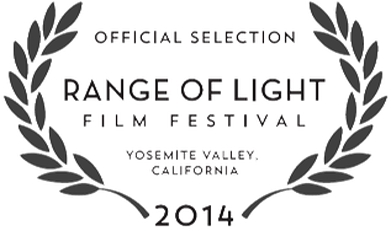
The Range Of Light Film Festival1 pm Friday, February 28, and 10 am Sunday, March 2, 2014
Yosemite National Park Visitor Center Auditorium
Vintage Songs Of Yosemite
Rare recordings, archival films and images with Tom Bopp live at the piano
The Faculty Club U. C. BerkeleyTom Bopp's Annual Dinner Concert
6 pm Friday, March 21, 2014
Songs of Comfort from Yon Days of Yore
$45 all inclusive . Reservations : (510) 540-5678 ext.224
The Wawona Hotel
Starting Friday, April 11
Tuesday - Saturday 5:30 - 9:30 pmOld Town Music Hall
Sunday, November 9
El Segundo, CA
Yosemite National Park Visitor Center Auditorium
Vintage Songs Of Yosemite
Rare recordings, archival films and images with Tom Bopp live at the piano
The Faculty Club U. C. BerkeleyTom Bopp's Annual Dinner Concert
6 pm Friday, March 21, 2014
Songs of Comfort from Yon Days of Yore
$45 all inclusive . Reservations : (510) 540-5678 ext.224
The Wawona Hotel
Starting Friday, April 11
Tuesday - Saturday 5:30 - 9:30 pmOld Town Music Hall
Sunday, November 9
El Segundo, CA
Range of Light Film Festival Starts Thursday, February 27
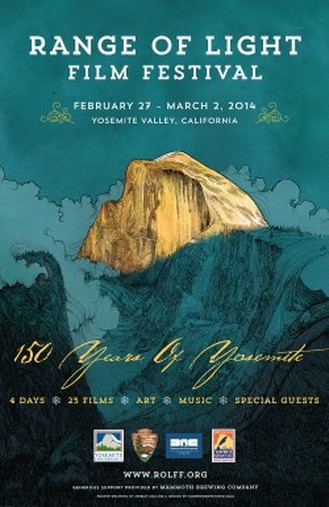
The Range of Light Film Festival will debut in Yosemite National Park from Thursday, February 27, through Sunday, March 2, 2014. The festival is presented by Yosemite Conservancy, Yosemite National Park, and DNC Parks & Resorts at Yosemite, Inc. The festival, part of the park’s commemoration of the 150th anniversary of the signing of the Yosemite Grant, will be held in the Yosemite Theater behind the Yosemite Valley Visitor Center.
More than 25 films will be shown over four days in the Yosemite Theater, which has recently received a renovation and features a state-of-the art digital sound system. The program ranges from short films to feature-length movies, from archival films shot in the park to pioneering climbing films from the 1960s and contemporary, never-before-exhibited premieres.
"The festival is a great opportunity for people to see stories of Yosemite on the big screen and to meet filmmakers, artists and musicians as we enjoy the glory of winter in Yosemite Valley," says Steven Bumgardner, award-winning filmmaker behind the popular web video series Yosemite Nature Notes.
Over 20 filmmakers and artists will be in attendance, including Glen Denny (El Capitan), John Else (Yosemite: Fate of Heaven), Christopher Munch (Color of a Brisk and Leaping Day), Amy Marquis (The Way Home), Jeremy Collins (The Wolf & the Medallion) and Ian Ruhter (Silver and Light). There will also be a live concert on Saturday night, February 28, by Sierra Nevada soul and funk collective Jelly Bread, sponsored in part by Mammoth Brewing Company.
In 1864, President Abraham Lincoln signed the Yosemite Grant Act, establishing Yosemite Valley and Mariposa Grove as the first protected wild land for all time. In addition, this grant marked the first time land was set aside by the federal government for preservation. Almost 200 activities will be conducted this year, with the majority of them, occurring in communities near Yosemite National Park. For a complete list of activities and anniversary updates, please visit www.nps.gov/yose/anniversary.
A variety of ticket options and lodging discounts are available for the Range of Light Film Festival. For more information and to purchase tickets, go to the Range of Light Film Festival website at rolff.org.
Internet access in Wawona
Request for participation of all homewoners
As a follow up to those efforts being made to improve the internet access in Wawona, WAPOA would like to encourage all the homeowners to participate in the effort being conducted by the California Public Utilities Commission (CPUC) to survey the needs and assist our efforts. Each homeowner should submit comments and feedback directly to the Commission at the following website. http://www.cpuc.ca.gov/PUC/Telco/bbpubfeedback.htm
Owen Rochte, from the CPUC has been very helpful and is following up with both the National Park and AT&T to get a more definitive plan and schedule for the upgrades to the service. Owen has requested input from all the homeowners so that he can collect specific address data on a survey that the CPUC can best document the needs in the Wawona and YW areas. Owen did suggest that this hard copies of the survey be available to those members that cannot access the internet, and that access be provided at the schools, libraries and email or mailed to owners thru each homeowner group and/or association. There are three ways to provide feedback: 1) online using the interactive map survey, 2) using a hard copy paper survey, or 3) using our Android app called CalSPEED.
Should you have any questions or wish to speak to CPUC, please call or email Owen Rochte at (415) 703-5469 or [email protected]
Our collective voice will assure that AT&T, the NPS and the CPUC recognize the connectivity requirements includes both the residents and park service/staff…
Thank you
Curt Castagna
Owen Rochte, from the CPUC has been very helpful and is following up with both the National Park and AT&T to get a more definitive plan and schedule for the upgrades to the service. Owen has requested input from all the homeowners so that he can collect specific address data on a survey that the CPUC can best document the needs in the Wawona and YW areas. Owen did suggest that this hard copies of the survey be available to those members that cannot access the internet, and that access be provided at the schools, libraries and email or mailed to owners thru each homeowner group and/or association. There are three ways to provide feedback: 1) online using the interactive map survey, 2) using a hard copy paper survey, or 3) using our Android app called CalSPEED.
Should you have any questions or wish to speak to CPUC, please call or email Owen Rochte at (415) 703-5469 or [email protected]
Our collective voice will assure that AT&T, the NPS and the CPUC recognize the connectivity requirements includes both the residents and park service/staff…
Thank you
Curt Castagna
Couple takes outdoor camping to new heights
February 14, 2014, 11:27 AM
|A husband and wife team camp thousands of feet in the air at Yosemite National Park. Manuel Bojorquez reports.
CBS News This Morning
|A husband and wife team camp thousands of feet in the air at Yosemite National Park. Manuel Bojorquez reports.
CBS News This Morning
